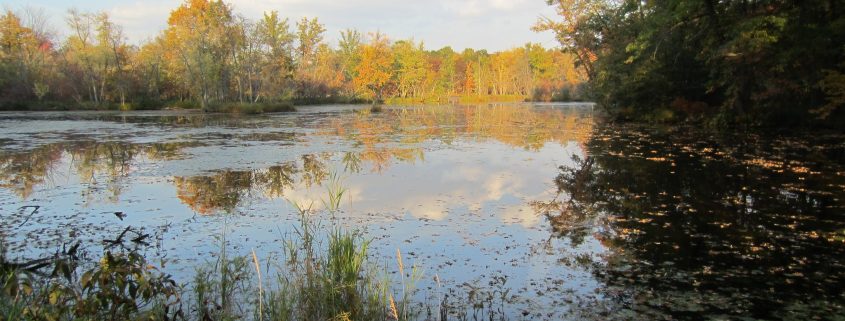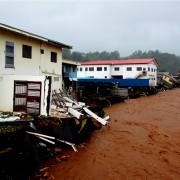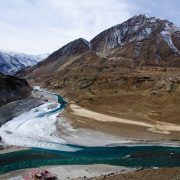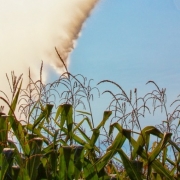Wisconsin Towns Face Groundwater Crisis Alone
High-capacity irrigation wells are drying out lakes but state officials have little authority to act.
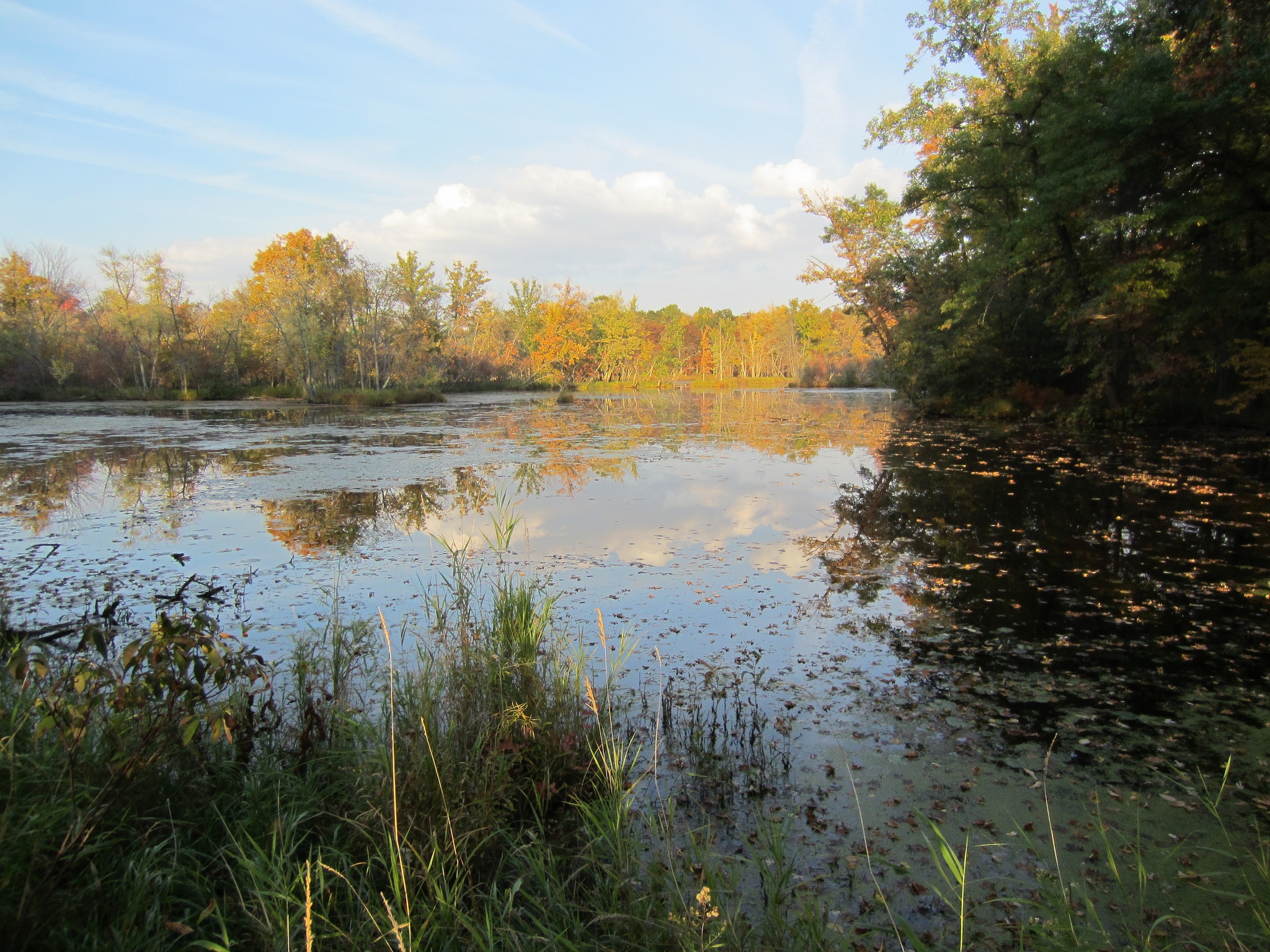
Mill Creek flows through Portage County, Wisconsin. The county is at the center of a statewide debate about high-capacity irrigation wells. Photo courtesy of Flickr/Creative Commons user jentastic
By Brett Walton, Circle of Blue
Water pollution and availability have emerged in recent years as urgent matters of public policy in Midwest farm states. The governors of Iowa and Minnesota, for instance, used their recent State of the State speeches to tout programs designed to reduce farm runoff. Both states are dedicating significant tax dollars to cut water pollution.
“I have called for 2017 to be a year, during which we all pay special attention to the quality of our state’s water, which most of us assume we can take for granted,” Minnesota Gov. Mark Dayton said on January 23, the day before unveiling a clean water agenda that includes $US 214 million to protect groundwater and drinking water sources and $US 150 million to convert farmland into water-filtering wetlands and streamside buffers.
There is no such focus from Wisconsin leaders. The appropriate use of land, mineral, and water supplies is causing turmoil in local politics from the Door Peninsula to the Central Sands, but other than praising the quality of Wisconsin cheese, Gov. Scott Walker made no mention of natural resources policy during his January 10 speech to the Legislature.
Critics say that this is to be expected from a Republican administration and a Legislature that routinely ignores water policy even as lakes and streams are drying and nitrate pollution from manure and fertilizers is on the rise because of irrigated agriculture.
“The Legislature has no interest or ability to address the problem,” Stephen Born, a retired University of Wisconsin environmental studies professor and former director of the State Planning Office, told Circle of Blue.
Born and others point to a May 2016 ruling by the attorney general’s office as evidence of state backsliding on promises to address high-capacity wells. The attorney general said that the Department of Natural Resources does not have the legal authority to consider the cumulative effect of wells on groundwater resources when approving new drilling. The DNR adopted that position in June.
New wells are evaluated individually despite falling lake levels being a collective problem stemming from too many straws in the ground. The ruling “denied hydrogeology,” Born said. The Legislature could grant the DNR the authority to do comprehensive well assessments, but lawmakers failed to do so last year.
In response, citizen groups filed lawsuits in October 2016 objecting to the DNR’s approval of nine high-capacity wells. The next hearing in the case is scheduled for March. Katie Nekola, a lawyer for Clean Wisconsin, one of the groups that filed the lawsuit, told Circle of Blue that laws passed during the Walker administration do not give the DNR any leeway to tailor permits to environmental realities.
In the absence of state authority, towns and private residents are on their own to deal with the cost of rising nitrate concentrations and shriveled lakes. But lacking the legal tools to restrict pumping, their role is one of education, monitoring, and dialogue with growers, says Jen McNelly, water resources specialist for Portage County.
“We don’t have a lot of teeth for those actions,” McNelly told Circle of Blue. “Regulatory control is not there for the county. We don’t have any regulatory actions that we can take.”
Groundwater Is Connected to Rivers and Lakes
Pressure on Wisconsin groundwater has been building for decades. Scientific studies in the 1960s and 1970s, when the number of high-capacity wells in the state numbered in the dozens, predicted that high pumping rates would shrink lakes and dry up streams. Those forecasts have come true, even as Wisconsin’s climate is getting wetter. Last year was Wisconsin’s second wettest in 122 years of record keeping.
The sand and gravel aquifers of central Wisconsin are where groundwater and farm production are most tightly connected. The area’s geologic setting and the rapid growth of irrigated agriculture have aligned to produce worrisome trends in water supply and pollution, nowhere more so than in Portage County.
Portage County is located in the Central Sands, an eight-county region that overlies soils that were deposited at the end of the last ice age. Just over half the county’s 823 square miles is farmland, much of which is planted with high-value vegetables such as potatoes, green peas, snap beans, and sweet corn that contribute to a $US 295 million agriculture industry.
Portage, home to nearly 71,000 people, is revising its groundwater management plan, which was last updated in 2004. McNelly said that whereas the previous plan focused on water quality, now county residents are equally concerned about water availability.
Their concerns are visible. Boat launches are unusable some summers and lakefront homeowners worry about declining property values as open waters recede and are replaced by grassland. Sections of the Little Plover River, a favored trout stream, have dried up in the last decade.
McNelly said that the state has reliable well data only back to 2011. Since then the number of high-capacity irrigation wells in Portage County has increased by 24 percent, to 777 wells. High-capacity wells can pump more than 100,000 gallons per day, and Portage County pumps more groundwater than any county in the state. Three-quarters of the water is pumped by high-capacity farm wells.
George Kraft, a University of Wisconsin-Stevens Point professor who has studied the region’s groundwater for three decades, says that there is a strong scientific consensus on the connection between more pumping and dry lakes.
“There is no doubt that pumping is having an impact in the area,” Kraft told Circle of Blue, referring to his 2010 study of Central Sands groundwater. “The lakes that are drying are where there are high concentrations of wells.” Portage County has the highest density of irrigation wells in the state.
Along with concerns about the volume of water pumped are worries about pollution. Groundwater is the sole source of drinking water in Portage County. Some 19 percent of private wells in the county test above the federal limit for nitrates, more than twice the state average. Nitrates interfere with the blood’s ability to transport oxygen and they are linked to an increased risk of bladder and ovarian cancers.
Municipal wells are affected too. The town of Whiting spent $US 630,000 on a nitrate purification system. Its neighbor Plover spent $US 2.3 million on an anion exchange system, also to remove nitrate. The most recent state survey, in 2012, found that municipal systems spent $US 32 million per year to remove nitrate from drinking water.
Neither Born nor McNelly thinks that state officials are doing enough to safeguard the state’s water supplies. For Born, water planning must be regional because of the tight link between groundwater and rivers. McNelly also wishes for comprehensive planning.
“There are a lot of interests at play but we need a strategic look at the use of water resources,” McNelly said. “We need to start considering impacts. That’s the biggest thing we’re missing.”
Brett writes about agriculture, energy, infrastructure, and the politics and economics of water in the United States. He also writes the Federal Water Tap, Circle of Blue’s weekly digest of U.S. government water news. He is the winner of two Society of Environmental Journalists reporting awards, one of the top honors in American environmental journalism: first place for explanatory reporting for a series on septic system pollution in the United States(2016) and third place for beat reporting in a small market (2014). He received the Sierra Club’s Distinguished Service Award in 2018. Brett lives in Seattle, where he hikes the mountains and bakes pies. Contact Brett Walton

